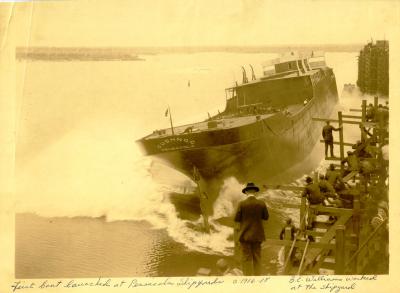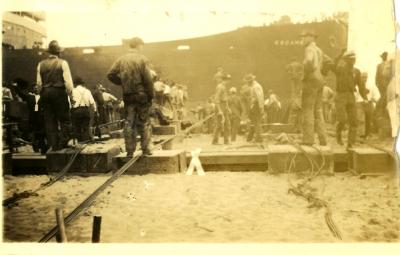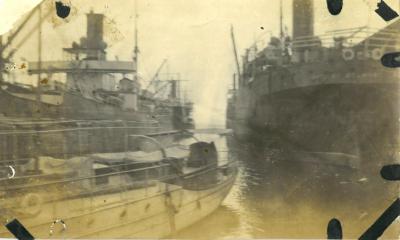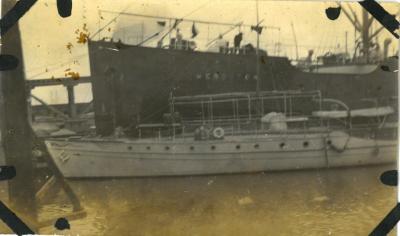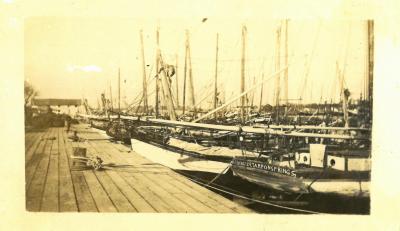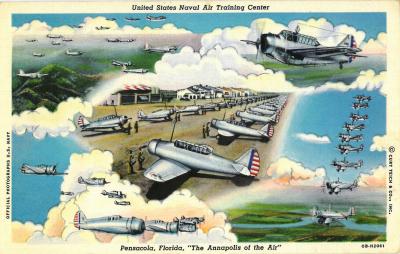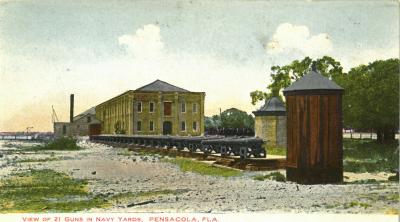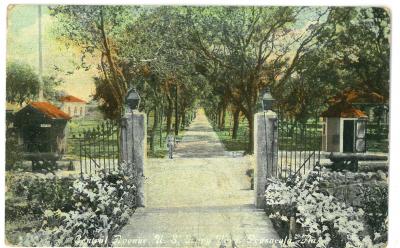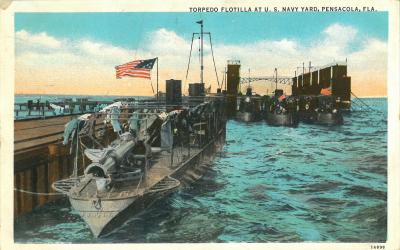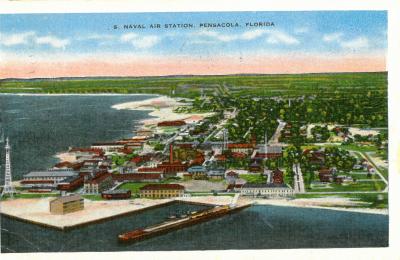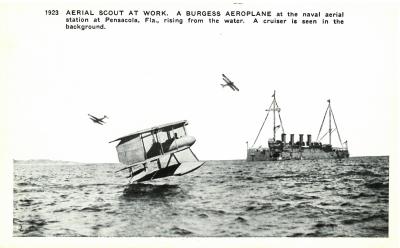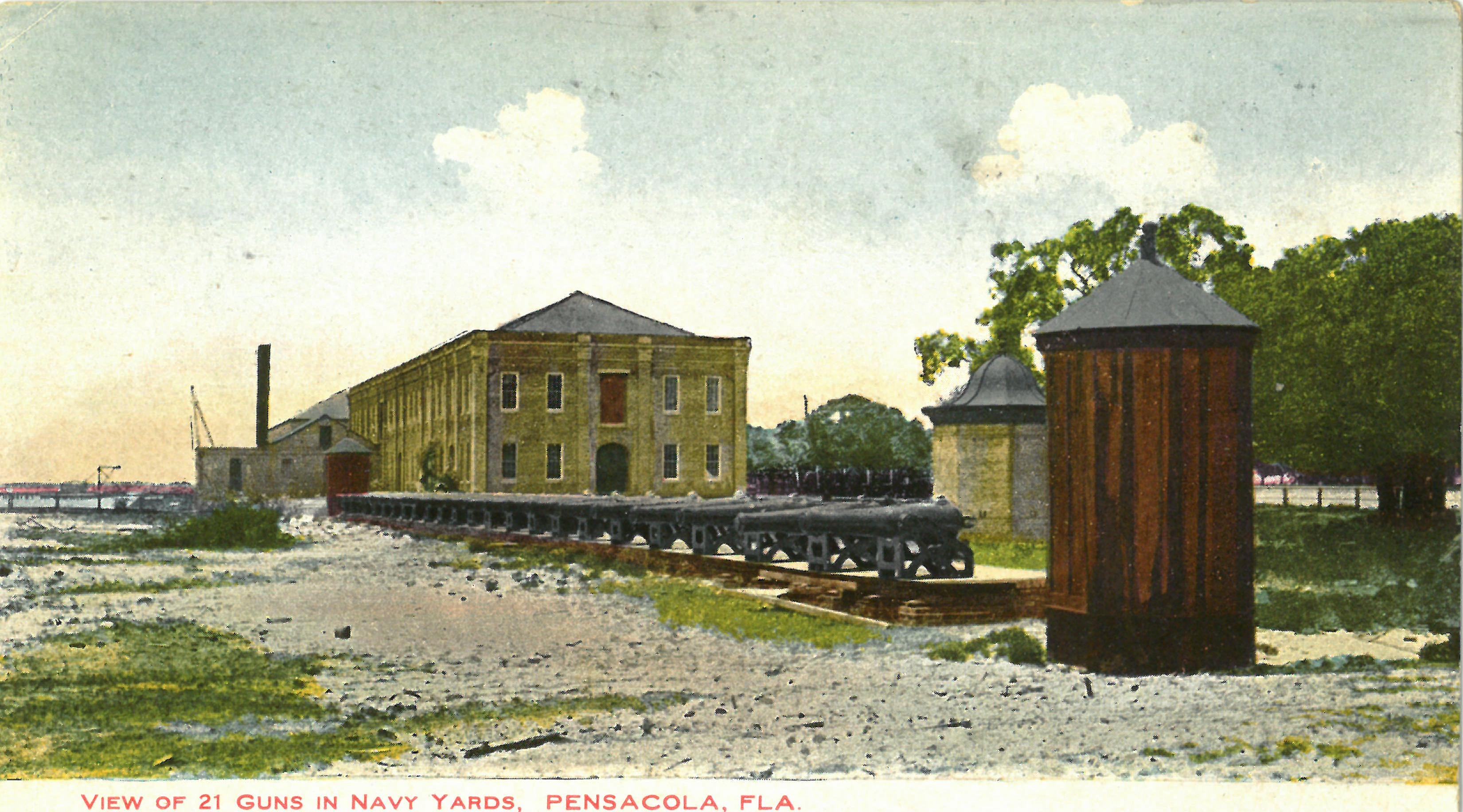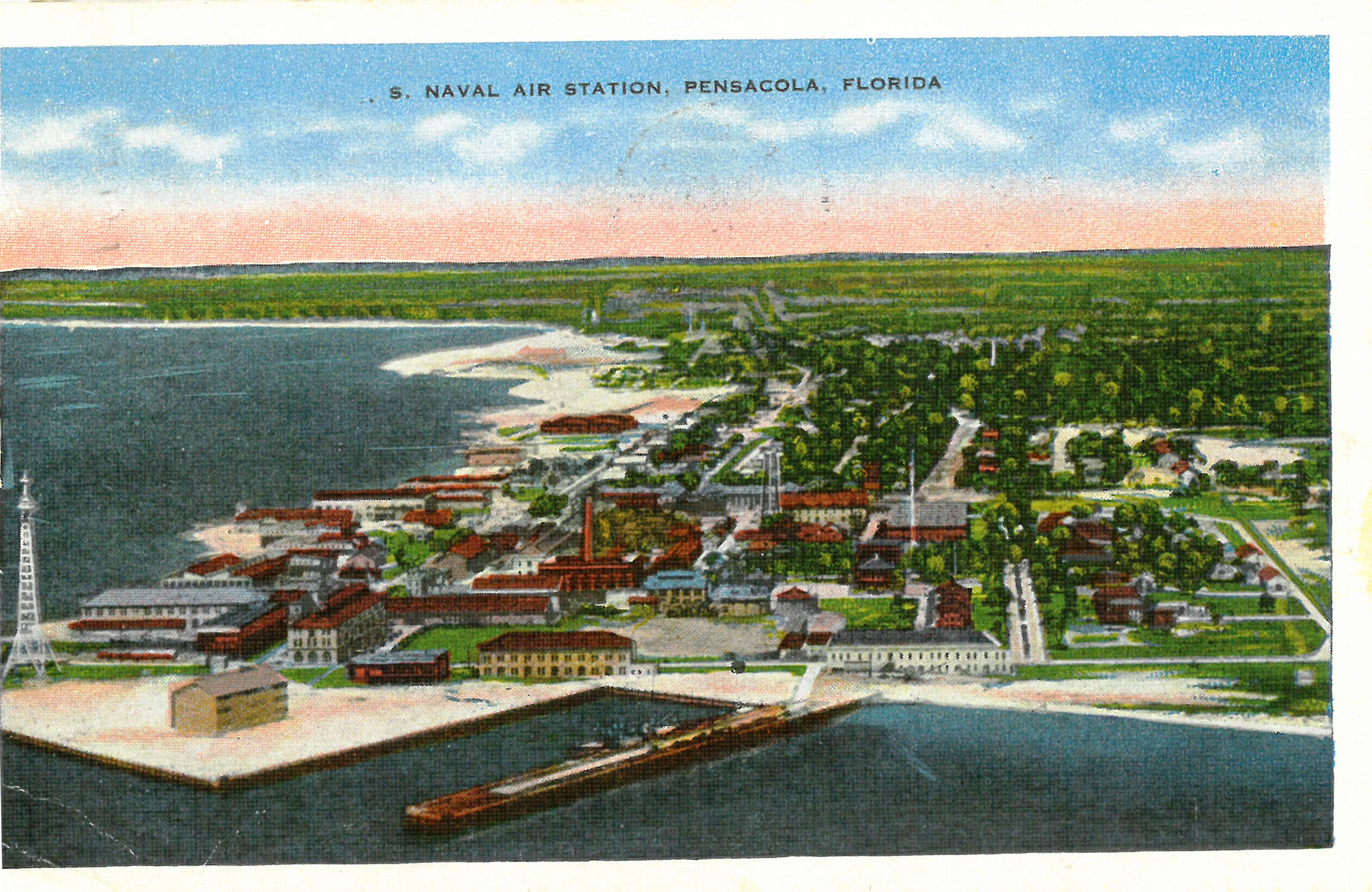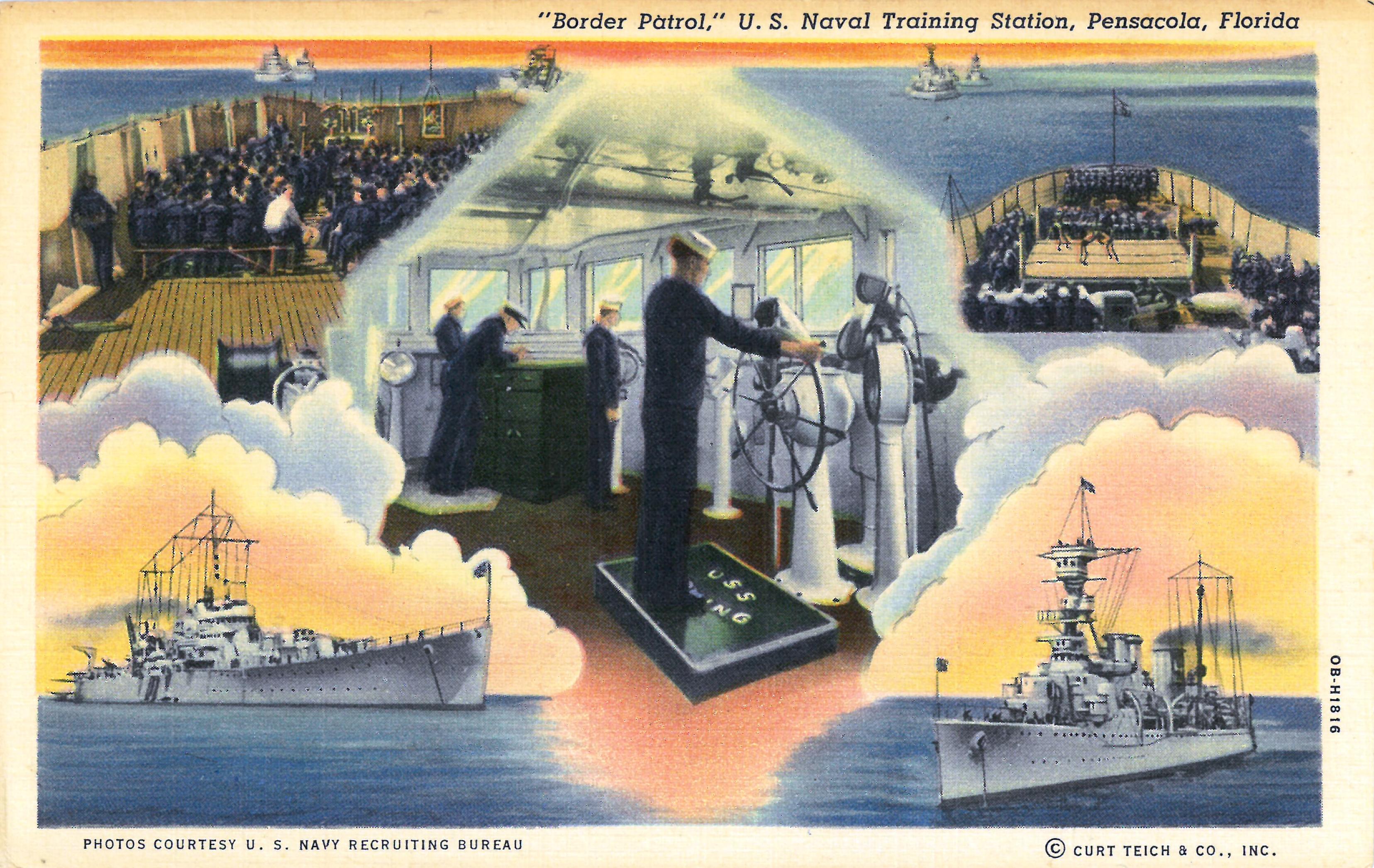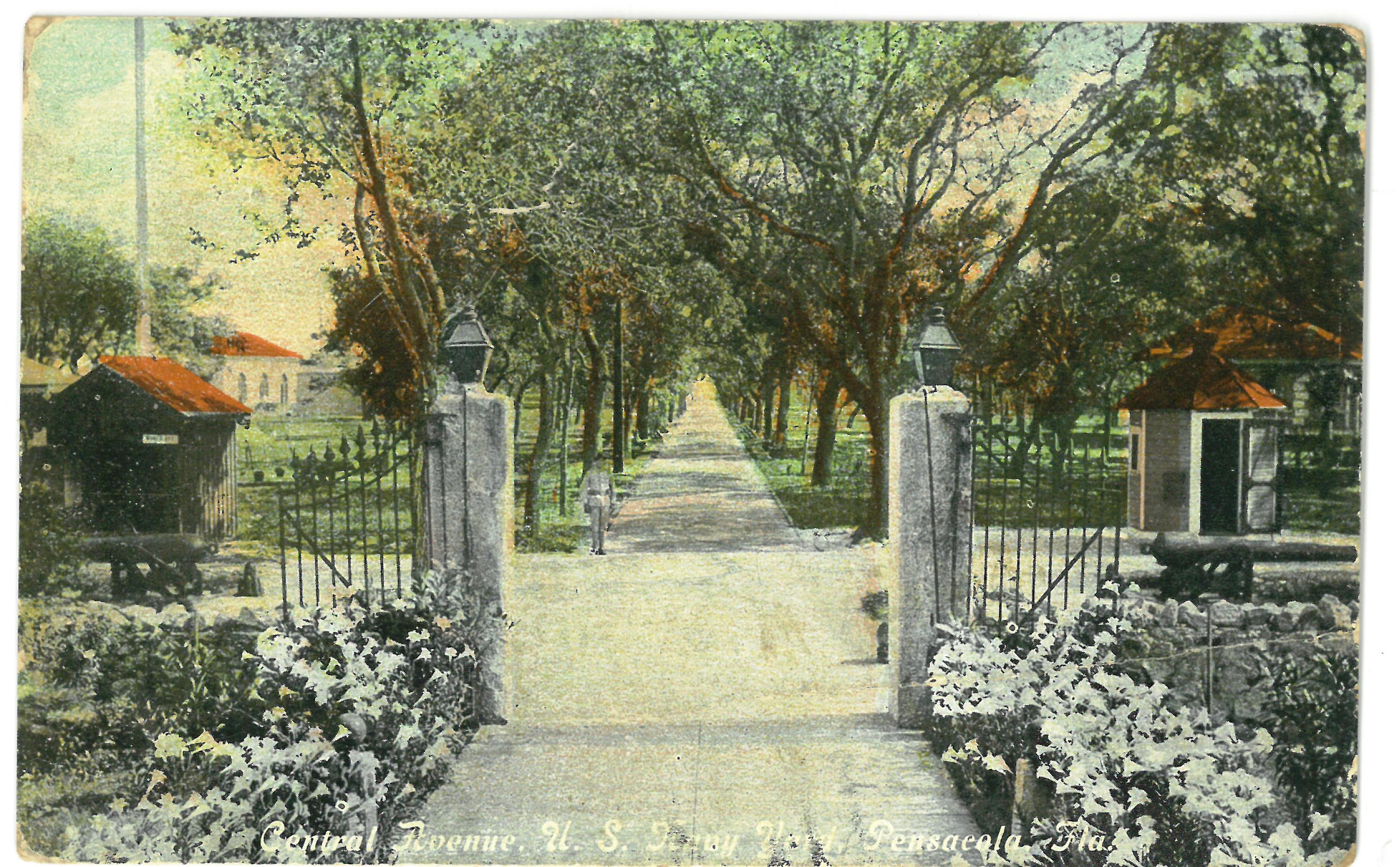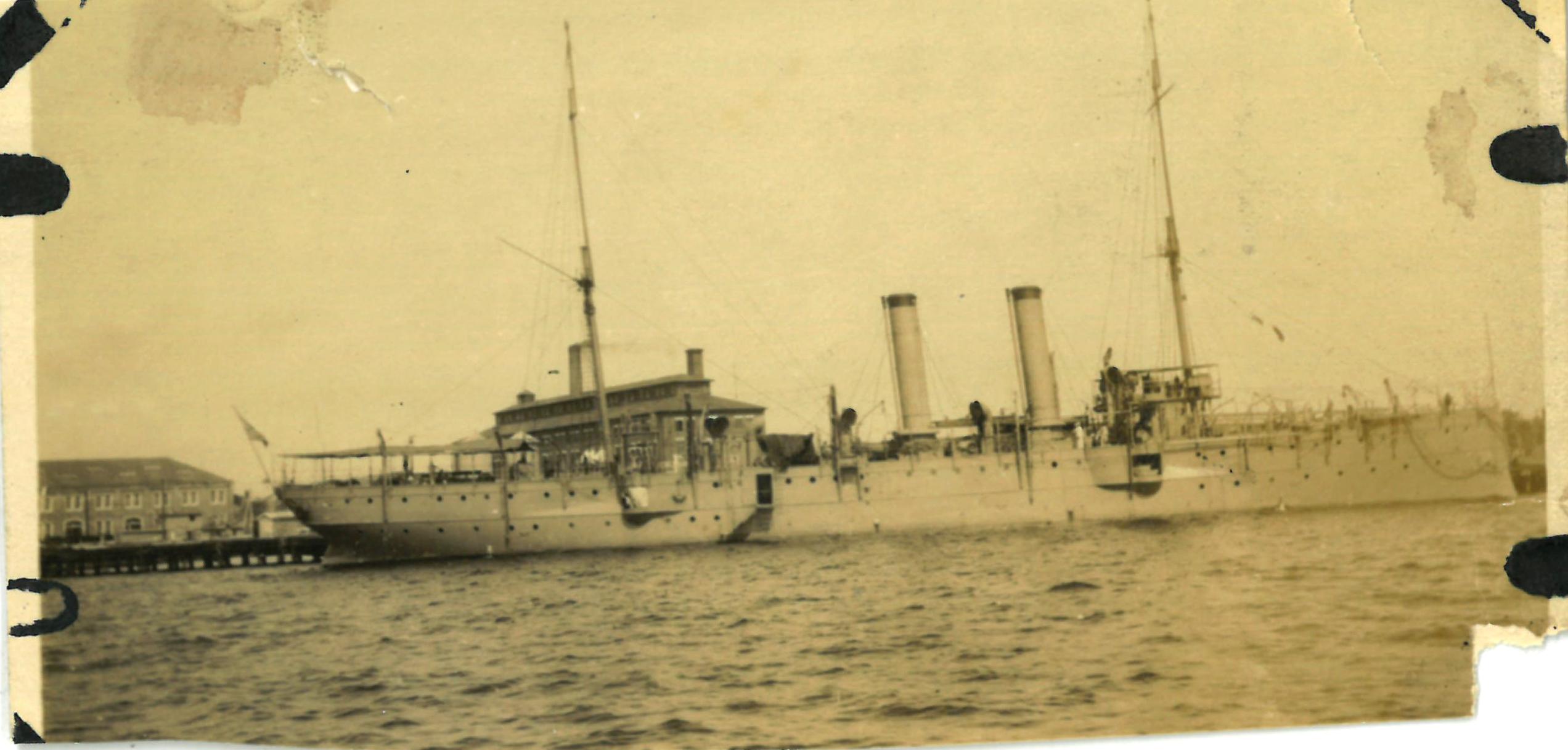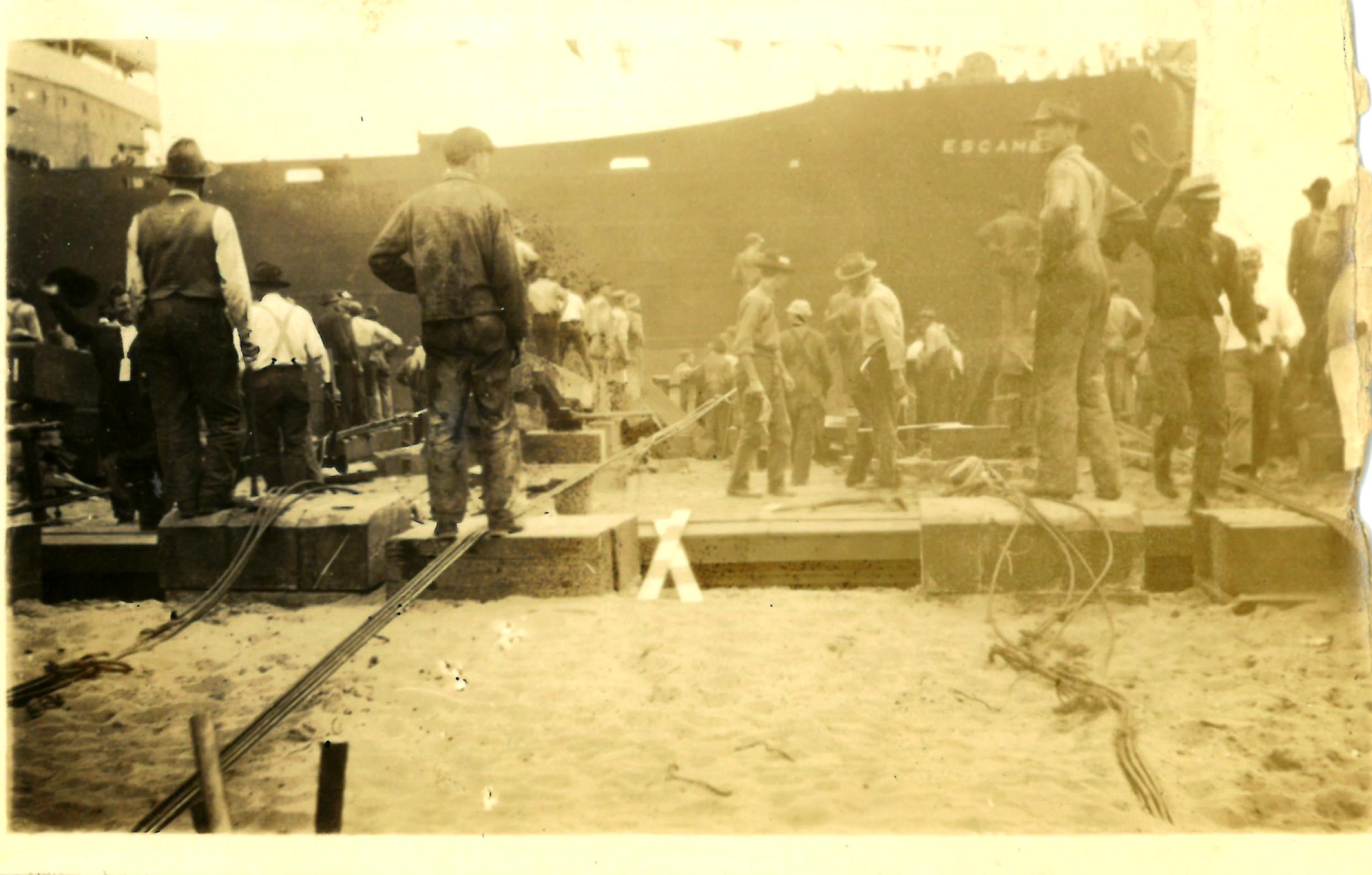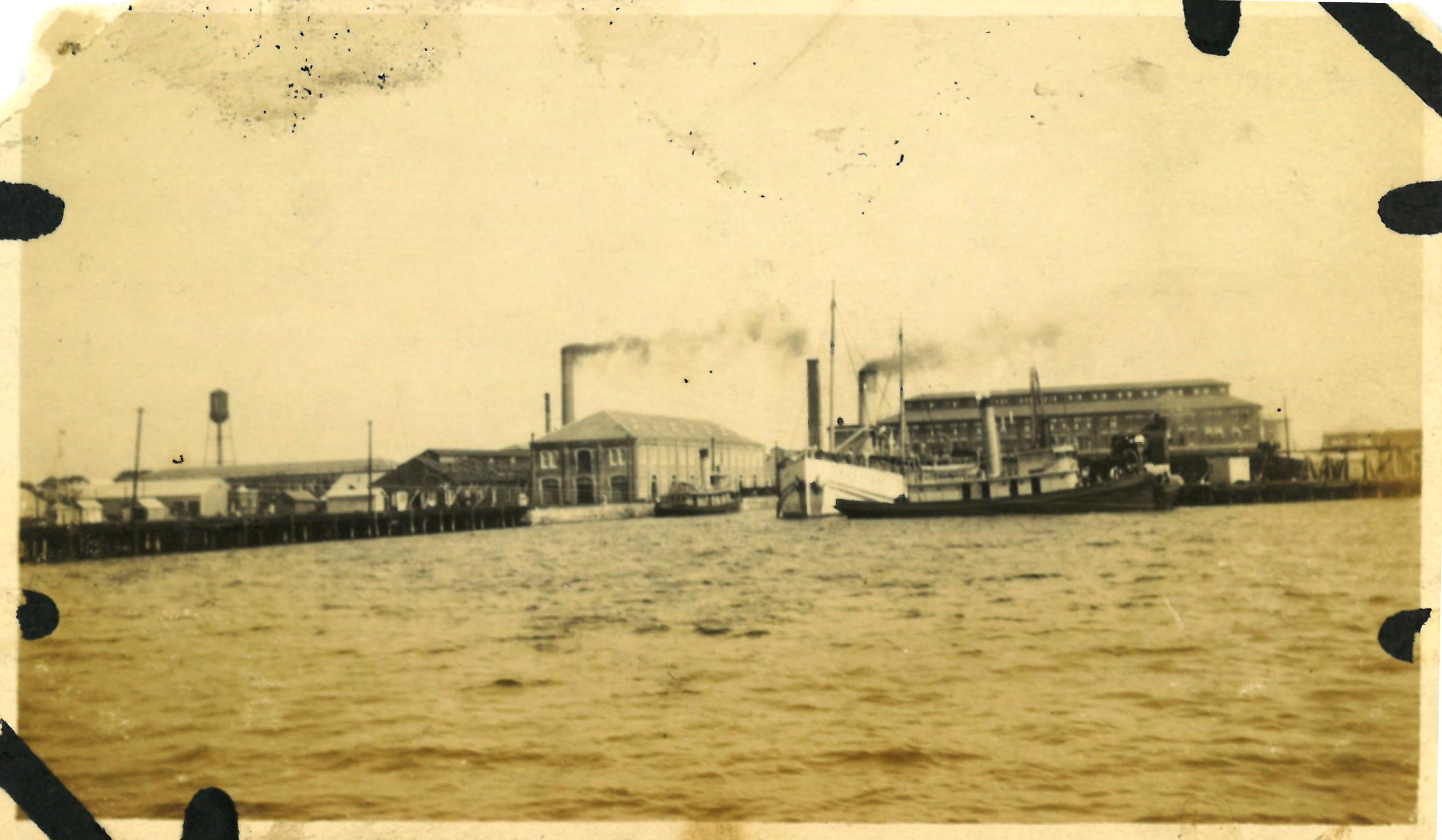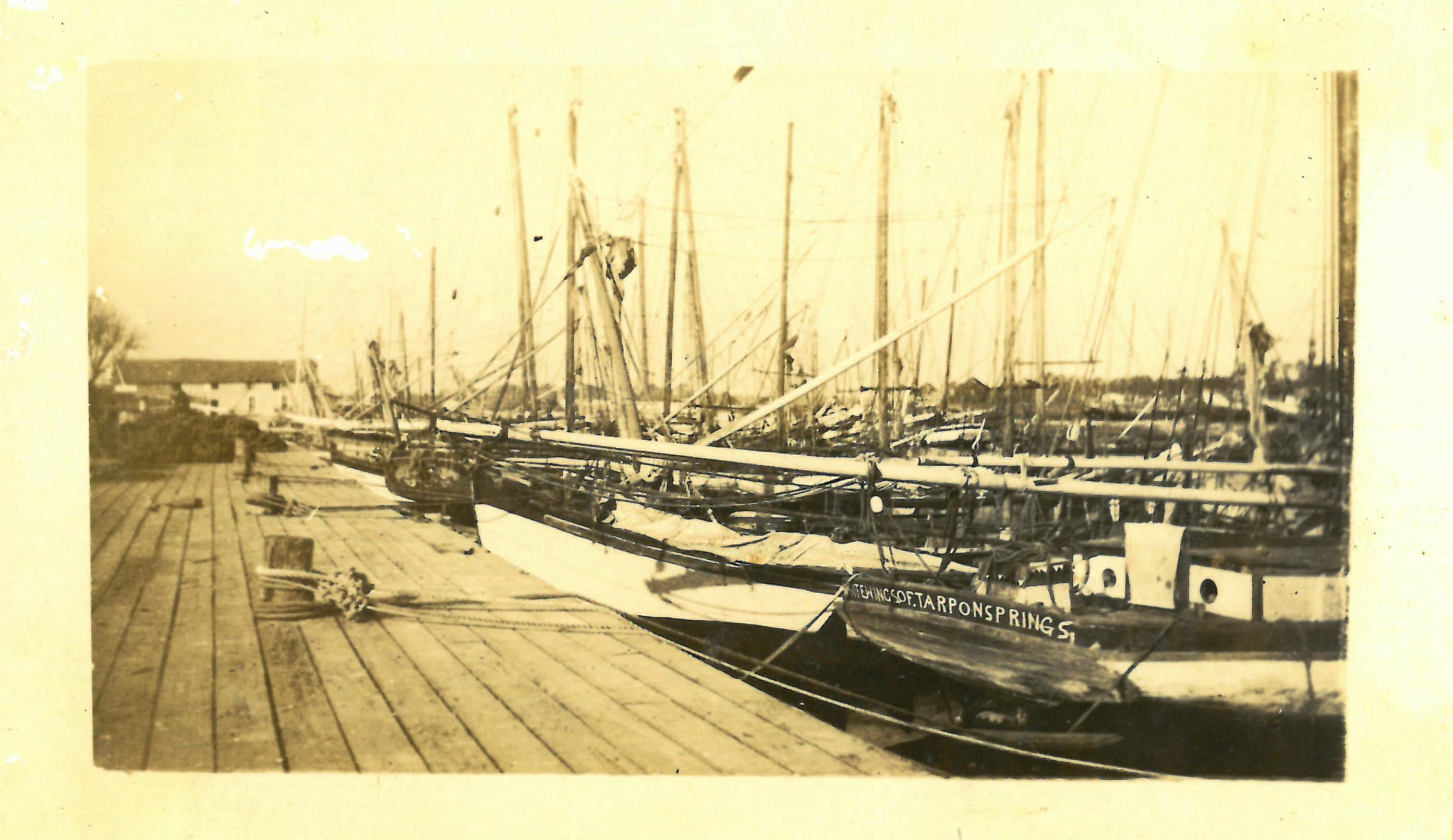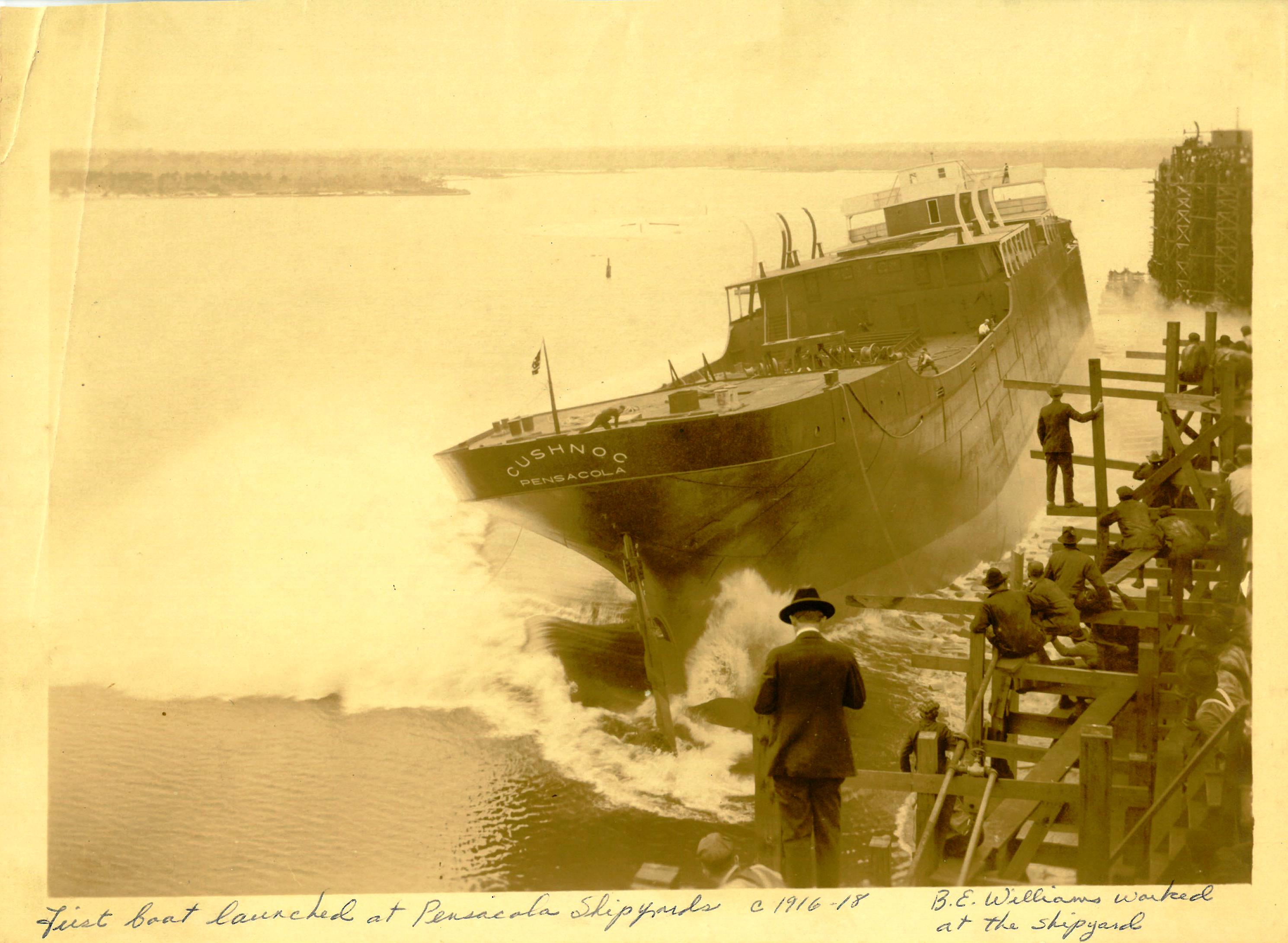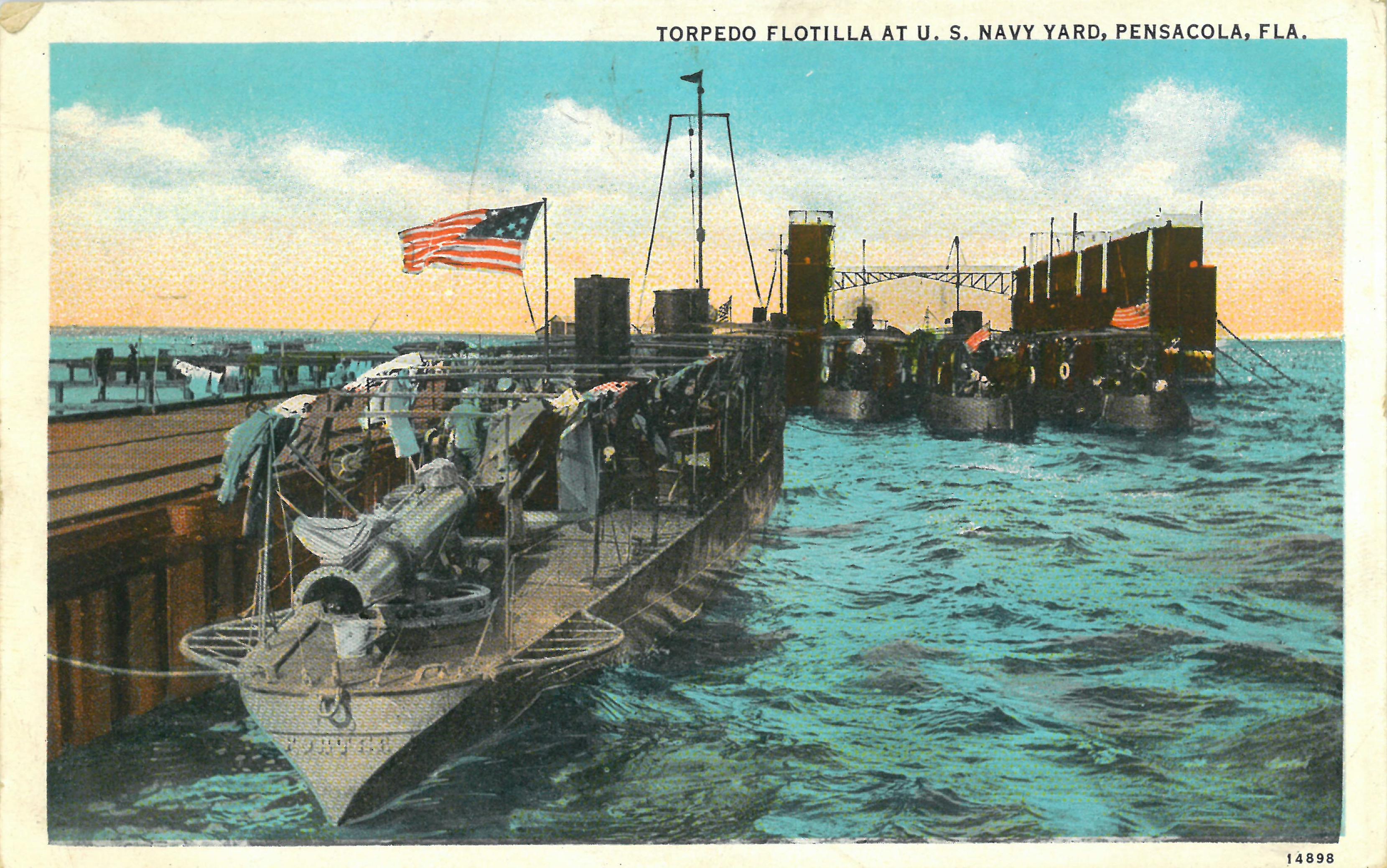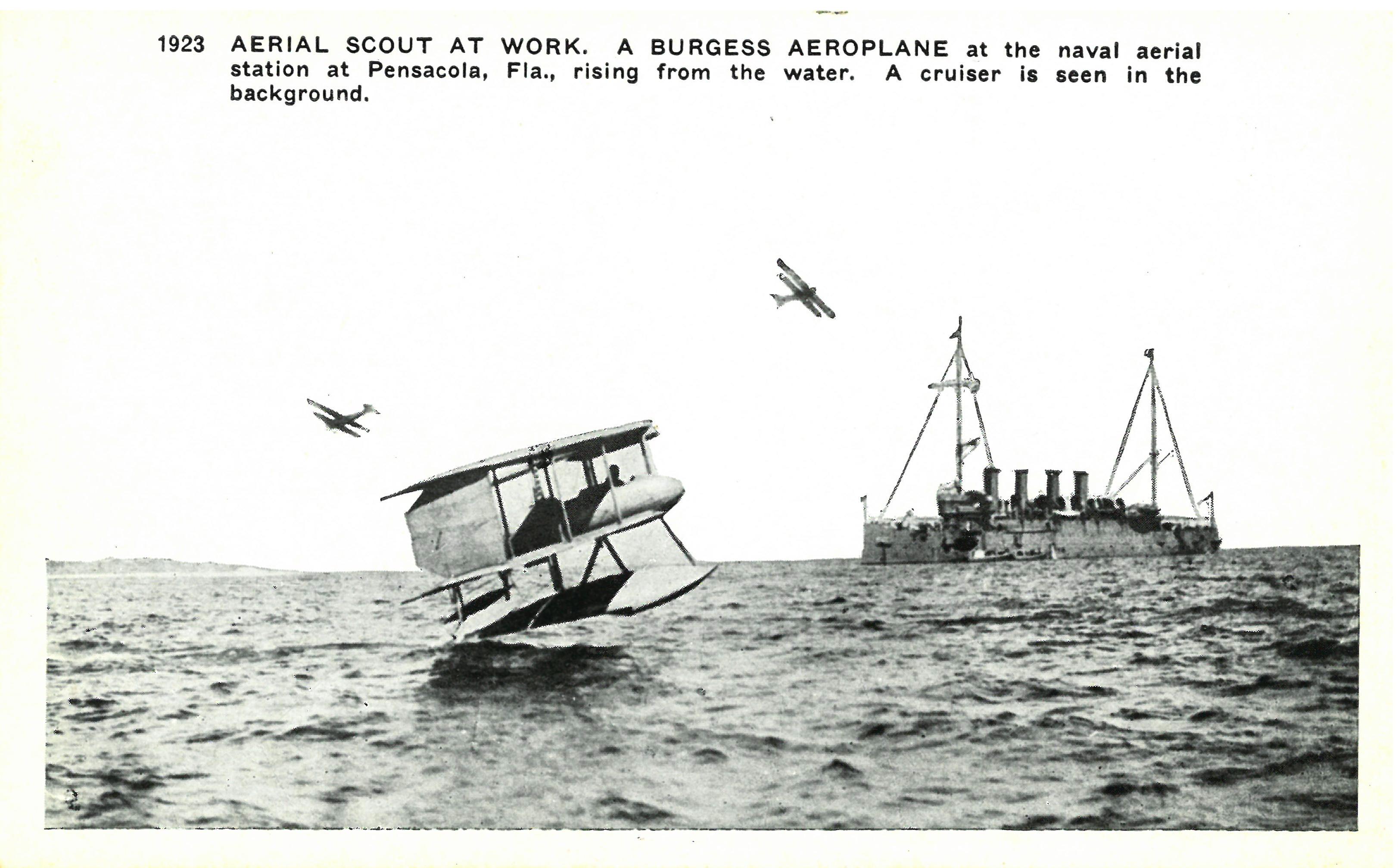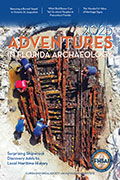There has been a military presence in the Pensacola area since the Spanish tried to establish a colony there in 1559. That effort failed after a few years, but in the late 17th century the Spanish returned to the natural deepwater port to build forts to defend the western part of their Florida colony.
Through the 19th century the U.S. government built forts on the barrier islands and the mainland and early in the 20th century began development of two major enterprises, ship building and aviation, which remains the major activity there to this day.
The Florida Historical Society Library houses a collection of photographs taken by civilian shipwright B.E. Williams who worked at the Pensacola Ship Building Company before and during the First World War. This includes photos of major events, such as the March, 1917, launch of the Cushnoc, the first boat built at the Pensacola shipyard
as well as more casual photos of the day to day life at the yard.
The Escambia was the second ship built at the yard.
The shots include views from the yard’s docks,
and from the water level.
Some civilian and commercial shipbuilding continues in the Pensacola area, but the major military presence is the Naval Air Station Pensacola, or, as some have dubbed it, “The Annapolis of the Air” and definitely the birthplace of U.S. Naval aviation.
The War Department recognized the potential of the airplane as a weapon and allocated funds in the 1911-12 Naval Appropriation Act for aeronautical development. In 1913 a study group appointed by the Secretary of the Navy recommended forming a training station for naval aviators at the long time Navy base in Pensacola.
The new technology meant a lot of changes for the established base,
Where traditional navy skills were practiced
and sailors could hang their laundry out to dry on the superstructure of their torpedo boats.
The change started small. In January, 1914 the first contingent, nine officers, 23 enlisted men and seven aircraft, arrived. When the United States got into WWI in April, 1917 the station only had 38 pilots, 163 enlisted men trained in aviation support, and 54 aircraft. By war’s end, in November 1918, about 6,000 men were stationed there, they had trained 1,000 pilots and the facilities stretched a mile down the beach.
Naval aviation was still experimental. Between the wars area residents grew to expect the unexpected as military pilots pushed their crafts to the limit, as with this Burgess design bi-plane adapted for water use and captured in this historic postcard from the Florida Historical Society Library’s extensive postcard collection.
There was some expansion between the wars, limited as America debated its role in world affairs and European wars. But the training crop was ready when needed, and the base, which trained 1000 pilots for WWI, was training 1000 pilots every month in WWII.
